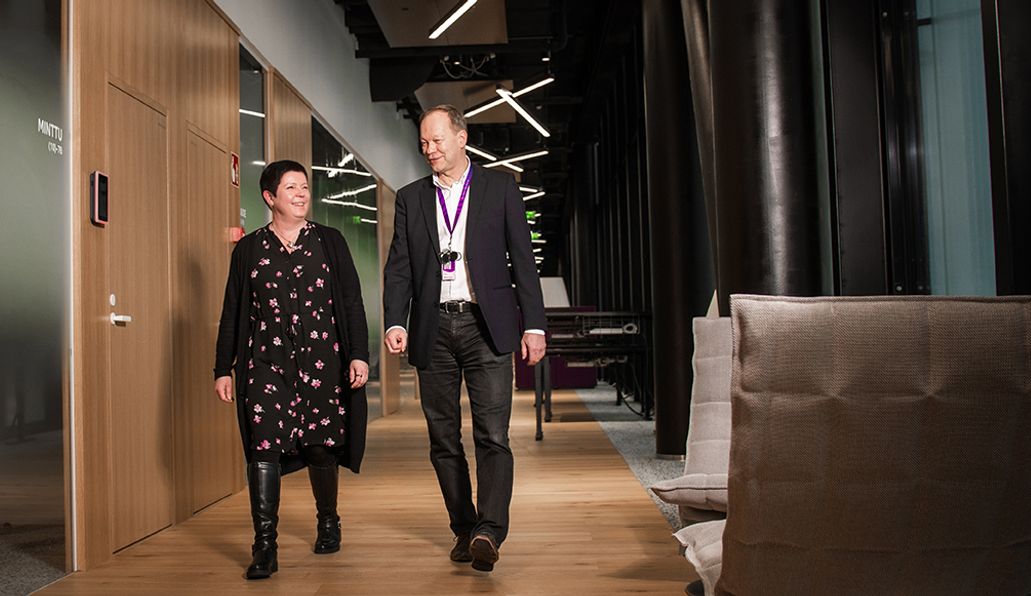

Lack of exercise is a threat to the work ability of Finns
The challenges caused by a lack of exercise are already evident. Only about 50% of working-age individuals get the recommended amount of aerobic exercise, and only about 10% get the minimum recommended amount of muscle-strengthening exercise. The annual cost of a lack of exercise in Finland is EUR 3.2 billion. A large part of these costs falls on the employer in the form of, for example, the use of health care services, disability pensions and sickness-related absences.
Everyone is ultimately responsible for their own well-being and coping, but employers play a huge role in supporting both physical and mental well-being. Employers already enable different things in the form of occupational health and other well-being services, but how could an employer get an employee to exercise and stay in good shape? After all, isn’t this a personal matter?
Employer’s responsibility for the employee’s overall well-being
Mehiläinen’s Responsible Physiotherapist and Occupational Physiotherapist Maria Paananen raised a controversial idea; if the employee contributes to the company’s results on a daily basis, is the employer not also responsible for supporting the well-being of the employee so that they can continue to make a profit? Despite this, in the majority of companies, investing in well-being is still highly outsourced. If exercising and staying in good physical shape were easily achieved by providing everyone with an exercise voucher, we would not be faced with this social problem.
Supporting the activity of employees with an exercise voucher is definitely important, but during the discussion, it was established that vouchers often only benefit those who already enjoy exercising. Those who do not exercise have difficulties with taking up sports for one reason or another. In this case, it would be important to cooperate with, for example, occupational health, and to find forms of support and ways to get everyone moving. This may mean, for example, appointments with an occupational psychologist first. If mental resources are scarce, they must be supported first before the focus can be directed to exercise. It is difficult or almost impossible for a mentally exhausted employee to change their habits on their own, even if they are made aware of all the health benefits of exercise.
Determining the workload and support measures
Mehiläinen has used Firstbeat’s heart rate measurement, for example, in workplace surveys when work and workload have been studied in different companies. At worst, the results may indicate that the employees cannot cope with the workload caused by the working day, which leads to them not having the resources to do things that they find meaningful in their free time. Based on the results of the heart rate measurement, it is possible to identify workload issues from both the individual’s and the work community’s point of view and to address the workload factors.
Anna Gustafsson, Mehiläinen’s Director of Musculoskeletal Services, points out that with the help of the heart rate measurement, the company’s physical stress factors can be assessed in a completely new and reliable way, alongside the employees’ own experiences. With the information obtained from the workplace survey, the company is able to allocate resources and well-being measures to the right areas, and thus genuinely affect the employee’s work ability.
An example of this is tailored support by an occupational psychologist and occupational physiotherapist for those individuals whose poor physical fitness has been found to predispose them to musculoskeletal diseases and sickness-related absences. According to studies, offering targeted and evidence-based measures in cooperation with occupational health results in returns of 1.5–5.5 times the investment.
Tips from Mehiläinen’s specialists Maria Paananen and Anna Gustafsson for employers to enable exercise for employees:
- Make sure that your workplace actually enables exercise. For example, if commuting by bike is encouraged, does the workplace provide bicycle parking, or does the office have shower facilities? Does your company culture enable and encourage office workouts or walking meetings? Movement and exercise help to improve health and reduce pain after just 10 minutes!
- Consider whether traditional means work in your company. Does your company invest in exercise vouchers, most of which are left unused, and yet sickness-related absences create unwanted costs? Consider different ways of increasing physical activity and, for example, utilise occupational health support measures. Working together during work days has been proven to improve a sense of community and occupational well-being.
- Ensure that you are familiar with the work’s stress factors, address the causes and consider targeted support measures according to the workload. Movement and increased physical activity are usually more effective than painkillers.
- There are several ways to increase physical activity and well-being. Could you introduce office workouts to your working days and arrange informative briefings on, for example, the importance of sleep and nutrition?
The text was written based on the customer event of Firstbeat and Mehiläinen.
Sources: Vasankari et al (2023), Ministry of Education and Culture (2022), UKK Institute (2022), Muños-Poblete et al. (2019), Rodrigues et al. (2014), UKK Institute 2022, ETK 2022, STKK 2016.
